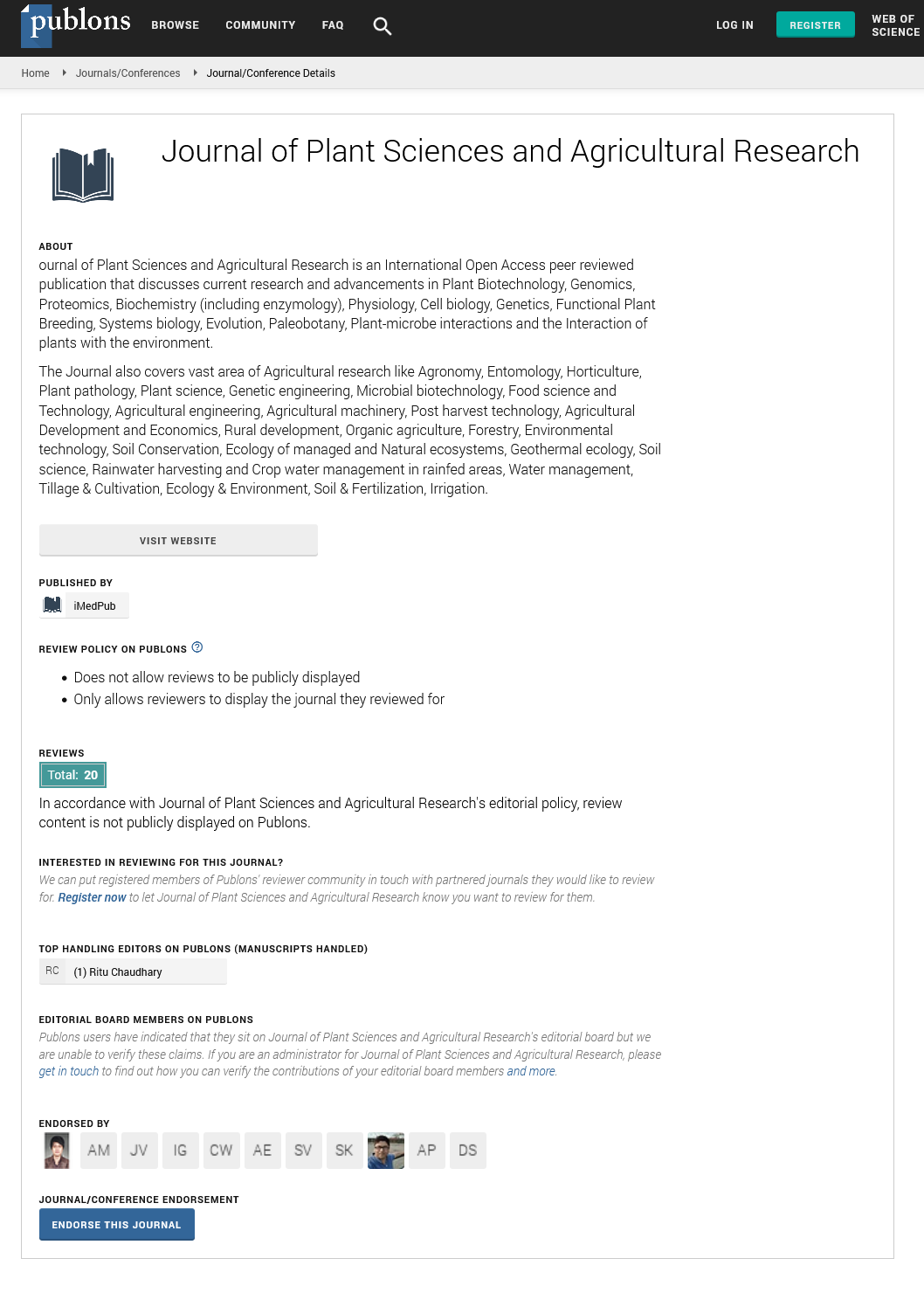Abstract
Virulence Spectrum of Wheat Stem Rust (Puccinia graminis f. sp. tritici) in Arsi Zones
Stem rust is the most devastating of all wheat diseases under favorable conditions; because it attacks the above ground parts of the host plant. It remains the most important disease of wheat worldwide, because of its wide distribution, its capacity to form new pathotypes that can attack previously resistant varieties, its potential to develop rapidly under optimal environmental conditions that result in serious yield loss. Until recently, stem rust of wheat has been successfully controlled through genetic resistance. However, in recent years, it has gained significance as new virulence trait (Ug99) evolved in its populations, demonstrating the vulnerability of broadly used wheat cultivars across the globe. The emergence of Ug99 pathotype in Uganda in 1998 and its subsequent geographical expansion within Africa, to the Middle East and the appearance of its variants illustrate the imminent threat to wheat production.
Ethiopia is one of the East African countries where most of its wheat varieties have become susceptible to the previously known prevalent virulences of stem rust and the newly evolved pathotype Ug99. This scientific information showed the importance of replacing the currently susceptible Ethiopian wheat varieties by effective and durable resistant varieties through breeding programs. However, the development of effective and durable resistant varieties against wheat stem rust pathogen population requires knowledge of virulences and virulence spectra present in the pathogen population.
Therefore, it is important to study the virulences and virulence spectra of wheat stem rust pathogen population in Ethiopia, particularly in Arsi where almost all of the two zones are known wheat-growing areas in the country.
Hence, this study was initiated with the objective to determine virulence and virulence spectra of wheat stem rust pathogen population in the study area. A total of 36 stem rust samples were collected from randomly selected farmers' fields in Arsi and West Arsi zones and identification of pathotypes as well as their virulence spectrum was studied in a greenhouse using Complete Randomized Design (CRD) in two replications and 13 pathotypes were identified from 31 isolate collections.
Pathotype designation was done using the international system of nomenclature for wheat stem rust pathogen population. Reaction of the differential lines tested against the stem rust isolates showed that all of the resistance genes in wheat stem rust differential lines were susceptible to one or the other isolates tested against them and most of the Pathotypes identified during the study were virulent on most of the wheat stem rust differential lines. For example, pathotype TTTTT was virulent on all of the 20 wheat stem rust differential lines and hence, can pose a serious threat to the wheat production in the study area. Likewise, Three Pathotypes (TPTTT, TTTRT and TTTST); other three pathotypes (PTTRT, TTKRT and TTTRP); other five pathotypes (TTTQP, TTPQT, PTKRT, TTKSK and PTTRP); and one pathotype (TPHTP); ranked; second, third, fourth and fifth orders in their virulence spectrum level being virulent on 19, 18, 17 and 16 of the 20 resistance genes of the differentials, respectively. Therefore, percent virulence spectrum of the Pathotypes on resistance genes of the differentials that ranked first, second, third, fourth and fifth in their virulence spectrum level was 100%, 95%, 90%, 85% and 80% respectively. The total percent virulence spectrum of the Pathotypes ranged 80%-100%. These findings indicate that the virulence spectrum of the wheat stem rust pathogen population in the survey area was broad enough to pose serious problem on wheat production in the area of study. The findings of the present study can provide information about the current status of virulence spectra and variability of wheat stem rust pathogen population in Arsi and West Arsi zones and this information can be used by wheat breeders to develop durable wheat stem rust resistant varieties.
Author(s): Worku Abebe
Abstract | Full-Text | PDF
Share This Article
Google Scholar citation report
Citations : 135
Journal of Plant Sciences and Agricultural Research peer review process verified at publons
Abstracted/Indexed in
- Google Scholar
- Publons
- Secret Search Engine Labs
Open Access Journals
- Aquaculture & Veterinary Science
- Chemistry & Chemical Sciences
- Clinical Sciences
- Engineering
- General Science
- Genetics & Molecular Biology
- Health Care & Nursing
- Immunology & Microbiology
- Materials Science
- Mathematics & Physics
- Medical Sciences
- Neurology & Psychiatry
- Oncology & Cancer Science
- Pharmaceutical Sciences
